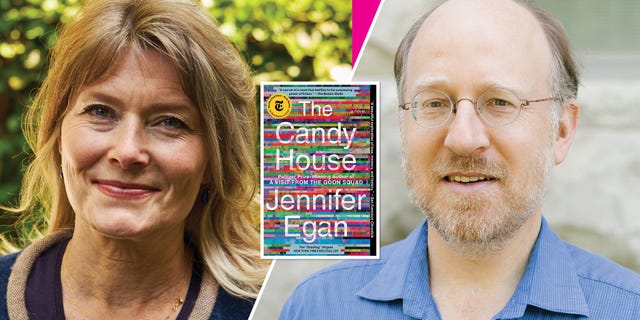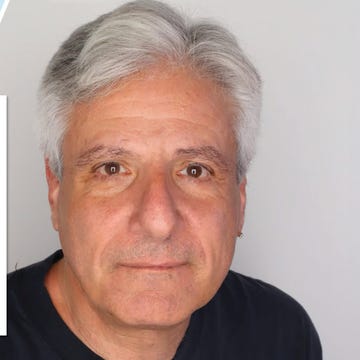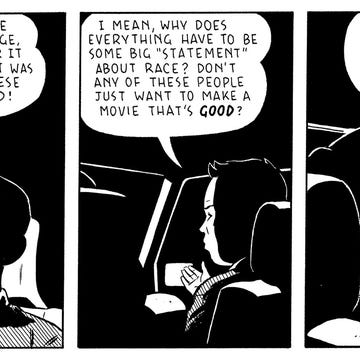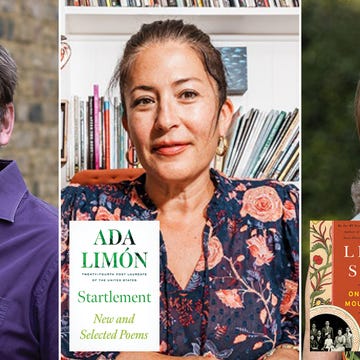The strategy of today’s “experimental novel” dates back to the earliest novels, which seems to surprise casual readers, who assume that contemporary novels involving fragmentation, stream of consciousness, or playfulness are utterly new. Eighteenth-century novelist Laurence Sterne, who wrote Tristram Shandy, for instance, was a precursor to Virginia Woolf and James Joyce and can be detected in the work of postmodernists like William Gaddis or Salman Rushdie. Those early novels zipped backward and forward and offered jokes and digressions. And going further back in time, Don Quixote, published in 1605, still feels experimental to those who encounter it 418 years later.
Sometimes it takes an astute critic to contextualize our initial understanding of a novel, particularly its antecedents. While you can see traces of what is often called experimental within Jennifer Egan’s A Visit from the Goon Squad and The Candy House, the October California Book Club selection, Egan loves Proust and 19th-century novels, plausible and realistic ones, and once you’re directed to that enthusiasm, you can understand the project of her novels much better.
Our special guest this month is Ivan Kreilkamp, a critic and English professor with a strong understanding of the history of the novel who wrote A Visit from the Goon Squad Reread, a smart, informed deep dive into Egan’s Pulitzer Prize–winning novel. He examines how her book fits into the novel form, which is intrinsically concerned with time. While acknowledging Egan’s conscious decision to move back and forth in time and to employ fragmentation—not the typical strategy of realist novels—he writes, “Even if Egan, as novelist, can freely reverse time, the novel is essentially realist and nonfantastical in the sense it conveys that for the human beings depicted within it, time’s forward march is unstoppable.” He points out that “Goon Squad’s interest in the extended life paths of characters and especially the process by which certain characters travel from rags to riches or vice versa is one quality that links it back to those classic nineteenth-century novels whose ‘power and agility’ Egan has said she envies.”
This point seems prescient in light of the overlap between A Visit from the Goon Squad’s and The Candy House’s characters, with the latter novel looking even more squarely at characters’ life journeys. The Candy House is not expressly about time. It comes at that interest slantwise—from the angle of memory—and like Goon Squad’s, its use of fragmentation echoes our own perception of time as discontinuous moments, or planes of time, rather than a long, continuous sequence. In his book, Kreilkamp directs us to Egan’s long-standing love of literary theory and history and her admiration of Proust. He says that “Proust identifies a fallacy—that to ‘enter some house or garden in which we used to live in our youth’ will be to ‘recapture for a moment the self that we were long ago.’ But such a recapture is impossible; it is ‘in ourselves that we should rather seek.’” And the fictional memory technology that Egan develops in The Candy House, Own Your Unconscious, does just this—characters are able to recapture, for a moment, the self that they were long ago.
Time serves as a prominent theme that is reflected in Egan’s structural choices. The characters of Goon Squad are in many cases aged, at different times in their lives, in The Candy House. The effect in the latter is of time as multiplanar, by way of memory. I think there may have been a way to write these two books as a panoramic Victorian novel, like Thomas Hardy’s, the sort of expansive book that tracks a character from his or her origins all the way to the end. But time remains, in The Candy House, a goon—an invented idiom that Egan uses to spell out her sense of the violent thuggishness of time. The recurring character Bennie Salazar comments in Goon Squad, “Time’s a goon, right? You gonna let that goon push you around?” Another character replies, “The goon won.”
I’m eager to hear Egan’s thoughts about how the narrative design of her latest novel comments on time and Kreilkamp’s critical understanding of The Candy House as a sibling novel to Goon Squad in its ability to recall us to the past, jump us to the future, rather than smoothly skate us through a life linearly as Victorian novels do.
Critics have long-discussed the claim that the novel is going to become so culturally irrelevant that it will die—this claim dates back to a time before Goon Squad was published. Most recently, however, the novel has been threatened by generative AI’s ability to mimic the transparent prose of contemporary, academic, nearly thesis-driven novels; this technology generates substitutes for the formulaic novel but also places the difficult novel, the novel that insists on thorny prose or complex ideas or unusual structures, particularly at risk of losing readers who come to expect the transparent. Jutting out, a tangent from that discussion of the novel’s death, both Goon Squad and The Candy House are preoccupied with new technology’s atomization of culture, an atomization that seems as harmful to the publication of novels as it was to record albums.
We hope you’ll join us for a profound literary experience with Egan, Kreilkamp, and California Book Club host John Freeman this Thursday.•
Join us on October 19 at 5 p.m., when Egan will appear in conversation with Kreilkamp and CBC host John Freeman to discuss The Candy House. Register for the Zoom conversation here.
INTIMACY
Writer Rasheeda Saka considers a connection between systems novels and The Candy House. —Alta
CBC TURNS THREE
This month is the third anniversary of the California Book Club, which was founded to define a new California canon. —Alta
NEEDLE ON A DIFFERENT GROOVE
Journalist Lynell George (A Handful of Earth, A Handful of Sky: The World of Octavia E. Butler) reviews Sly Stone’s memoir, Thank You (Falettinme Be Mice Elf Agin). She writes, “Frank, illuminating, and at turns harrowing, the book tracks a momentous arc.” —Alta
GENIUS GRANT
Poet Ada Limón has been named a 2023 MacArthur Fellow. Revisit CBC host John Freeman’s profile of her. —Alta
VICTORY FOR RISK-TAKING OAKLAND PRESS
Jon Fosse, previously a finalist for the National Book Critics Circle Award for Fiction and the National Book Award for Fiction, has won the 2023 Nobel Prize in Literature. The tiny Bay Area press Transit Books published his spectacular, sui generis work Septology, translated by Damion Searls. —Los Angeles Times
AUSTERE BEAUTY
Southern California journalist Nardine Saad writes about former U.S. poet laureate, Nobel winner, and Pulitzer Prize winner Louise Glück, who died this past week at age 80. —Los Angeles Times
Alta’s California Book Club email newsletter is published weekly. Sign up for free and you also will receive four custom-designed bookplates.



















